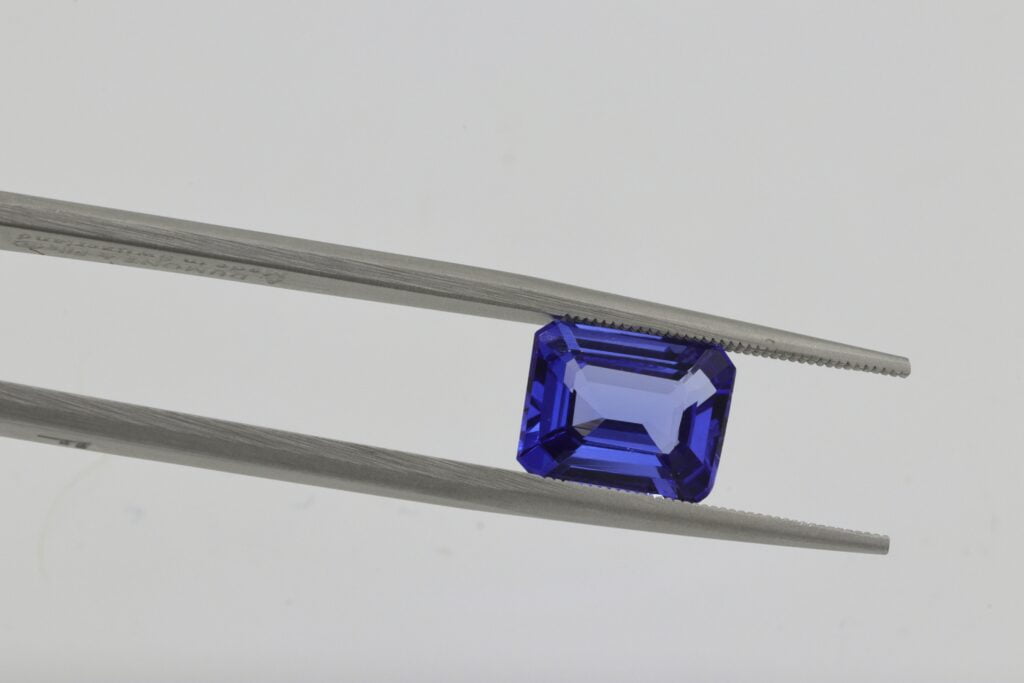Gem-cutting, or lapidary, is an art that involves cutting and shaping gemstones to enhance their radiance. Originating from Europe, this craft has a rich history that dates back to the Middle Ages. However, with the rise of cheaper labor and machine cutting in Asia, the European gem-cutting industry has faced a decline in recent years. France, in particular, has witnessed a significant drop in the number of skilled gem-cutters. To revive this fading art, it is crucial to cultivate local talent and provide more training opportunities. While some countries still have training programs and apprenticeships in place, the future of gem-cutting might not follow traditional guilds. Nevertheless, documenting traditional techniques can play a vital role in preserving this awe-inspiring industry. Even with the changing landscape, high-end jewelry houses such as Boucheron, Tiffany & Co., and Harry Winston continue to demand well-cut gemstones, ensuring a market for exquisite craftsmanship.
Understanding Gem-cutting
Defining gem-cutting or lapidary
Gem-cutting, also known as lapidary, is the intricate process of cutting and shaping gemstones to optimize their radiance. By carefully sculpting the gemstones, lapidary artists enhance their beauty and brilliance, transforming raw minerals into stunning works of art. This art form requires precision, craftsmanship, and a deep understanding of the structural properties and characteristics of different gemstones.
The purpose of gem-cutting in enhancing gemstone radiance
The primary purpose of gem-cutting is to enhance the radiance and visual appeal of gemstones. Through the careful manipulation of angles, facets, and proportions, lapidary artists bring out the full potential of a gemstone, maximizing its brilliance, fire, and sparkle. The precision cuts and polished surfaces optimize the way light interacts with the gemstone, resulting in an exquisite play of color and reflections. Gem-cutting is not only an artistic endeavor but also a scientific one, as it requires a profound knowledge of optics and geometrical principles to achieve the desired effects.
Historical Origin of Gem-cutting
The Middle Ages as the heart of lapidary arts
The art of gem-cutting flourished during the Middle Ages in Europe, particularly in regions like Italy, Germany, and France. Skilled lapidary artists developed sophisticated techniques and tools to create intricate cuts and designs. Gem-cutting was not only a means of enhancing gemstones’ beauty but also a symbol of wealth, prestige, and spirituality. The guilds of lapidaries played a crucial role in preserving and passing down the knowledge and secrets of this ancient craft from one generation to the next.
Technological advancements in gem-cutting during the Middle Ages
During the Middle Ages, significant technological advancements revolutionized the field of gem-cutting. The development of the horizontal cutting wheel and the use of diamond as an abrasive allowed lapidaries to achieve precise cuts and intricate designs. The introduction of new cutting styles, such as rose cuts and table cuts, further expanded the possibilities for gemstone transformation. These technological innovations marked a turning point in gem-cutting, paving the way for the exquisite craftsmanship that continues to amaze us today.

Geographical Shift and Evolution of Gem-cutting
The rise of gem-cutting in Asia
While Europe was once the heartland of lapidary arts, gem-cutting has seen a significant shift towards Asia in recent decades. Countries like Thailand, India, and China have emerged as key players in the gem-cutting industry, attracting both skilled artisans and a growing market for gemstones. Asian lapidaries have not only adopted traditional European cutting techniques but also introduced their unique styles and innovations. This vibrant and diverse landscape has added fresh perspectives and techniques to the art of gem-cutting.
The impact of machine-cutting technologies on the European gem-cutting industry
With the rise of machine-cutting technologies, the European gem-cutting industry has faced formidable challenges. Cheaper labor and automated cutting machines have made it increasingly difficult for European artisans to compete. This has led to a decline in the skill level and number of gem-cutters in Europe, particularly in countries like France. However, it is crucial to highlight that the value of hand-cut gemstones remains unparalleled, as they showcase the unique touch and artistry of the human hand.
The Decline of Gem-cutting in Europe
The role of cheaper labor in depleting European skill in gem-cutting
The availability of cheaper labor in certain regions of the world has had a detrimental impact on the European gem-cutting industry. Many gem-cutting operations have relocated to countries with lower labor costs, resulting in a loss of expertise and craftsmanship in Europe. This shift has not only undermined the economic viability of European gem-cutters but also eroded the centuries-old tradition and knowledge base associated with the craft.
Lack of training opportunities fuelling the decline of gem-cutting in Europe
Another critical factor contributing to the decline of gem-cutting in Europe is the lack of training opportunities for aspiring artisans. The complex and specialized nature of lapidary arts requires years of dedicated practice and mentorship. However, as the number of established gem-cutters dwindles, the availability of skilled mentors and structured training programs becomes scarce. This dearth of training opportunities hinders the growth and succession of the gem-cutting craft in Europe.
The significant drop in the number of cutters in France
France, once a vibrant hub of gem-cutting, has experienced a significant drop in the number of cutters in recent years. As the availability of skilled artisans declines and the demand for gemstones remains high, France faces a challenging situation. Without adequate measures to address the decline in gem-cutting skills, the country’s rich lapidary heritage could be at risk. However, there is hope for revival through targeted efforts to cultivate local talent and provide essential training programs.

Reviving the Gem-cutting Industry
The need for local talent cultivation
To revitalize the gem-cutting industry, it is essential to cultivate and support local talent. This involves identifying individuals with a passion for lapidary arts and providing them with the necessary resources and guidance to pursue a career in gem-cutting. By nurturing a new generation of skilled artisans, communities can preserve their cultural heritage and ensure the longevity of this ancient craft.
Provision of more training opportunities
Addressing the lack of training opportunities is pivotal to the revival of gem-cutting in Europe. Governments, educational institutions, and industry stakeholders must work together to develop structured training programs and apprenticeships. These programs should provide aspiring gem-cutters with hands-on experience, exposure to different gem-cutting techniques, and access to mentors who can impart their knowledge and expertise. By investing in education and skills development, Europe can reclaim its position as a leader in the gem-cutting industry.
The potential of traditional techniques in reviving the industry
While technology has transformed the gem-cutting industry, traditional techniques still hold immense value and potential. Documenting and preserving these techniques through research, publications, and educational initiatives can inspire new generations of gem-cutters. By marrying traditional craftsmanship with modern technologies, artisans can create unique and captivating gemstone cuts that capture the essence of both the past and the present. Embracing tradition while embracing innovation can lead to a thriving gem-cutting industry.
Training and Apprenticeship Programs in Gem-cutting
Existing training programs and apprenticeships in Germany and Switzerland
Germany and Switzerland are two countries that have managed to maintain robust training programs and apprenticeships in gem-cutting. These programs combine classroom education with practical training, allowing aspiring gem-cutters to learn the art firsthand from experienced professionals. The curriculum covers a wide range of topics, including gemology, gemstone identification, cutting techniques, and business aspects of the industry.
Exploring the structure of these programs
Training programs and apprenticeships in Germany and Switzerland usually span several years, ensuring a comprehensive and in-depth education. Students learn the basics of lapidary arts, including cutting and shaping techniques, before progressing to more advanced topics. The programs also emphasize gemstone grading, quality assessment, and the use of specialized lapidary tools and machinery. Hands-on training is a core component, allowing apprentices to develop their skills under the guidance of skilled mentors.
The effectiveness of these programs in preserving the skill
The training programs and apprenticeships in Germany and Switzerland have proven highly effective in preserving and passing down the art of gem-cutting. By providing aspiring gem-cutters with a structured learning environment and ample opportunities for hands-on practice, these programs ensure the transfer of knowledge from experienced artisans to the next generation. The emphasis on quality, craftsmanship, and technical proficiency creates a solid foundation for future gem-cutting professionals.

The Role of High-End Jewelry Houses
The utilization of faceted gemstones by high-end jewelry houses
High-end jewelry houses, such as Boucheron, Tiffany & Co., and Harry Winston, play a pivotal role in driving the demand for well-cut gemstones. These prestigious brands understand the value of exceptional gemstone cuts and often collaborate with skilled gem-cutters to bring their design visions to life. By featuring meticulously faceted gemstones in their collections, these jewelry houses showcase the beauty and craftsmanship that can only be achieved through the art of gem-cutting.
Notable jewelry houses like Boucheron, Tiffany & Co., and Harry Winston’s contribution toward demand for well-cut gems
Boucheron, Tiffany & Co., and Harry Winston have made significant contributions to the demand for well-cut gemstones. These esteemed jewelry houses have consistently championed the use of exceptional gem cuts in their iconic pieces, making them sought-after by collectors and connoisseurs. By setting high standards for gemstone quality and craftsmanship, these brands have raised consumer awareness and appreciation for the precision and artistry of gem-cutting.
The Market for Well-cut Gems
Analysis of the market demand for well-cut gems
The market demand for well-cut gems has been steadily growing, driven by discerning consumers’ desire for exceptional craftsmanship and aesthetics. Well-cut gemstones exhibit superior brilliance, fire, and scintillation, captivating buyers with their mesmerizing play of color and light. Collectors and jewelry enthusiasts seek out stones with excellent cuts, recognizing that the quality of the cut significantly influences a gemstone’s overall beauty and value.
Future projections for the market of well-cut gems
Experts project that the market for well-cut gems will continue to expand in the coming years. As consumer awareness and appreciation for gemstone cuts increase, the demand for high-quality, precision-cut gems will rise. Additionally, advancements in technology and equipment will enable gem-cutters to explore new cutting techniques and push the boundaries of artistic expression. This evolving market presents exciting opportunities for both established lapidaries and emerging talents to showcase their skills and meet the growing demand.

The Future of Gem-cutting
Potential changes in traditional guilds and apprenticeships
The future of gem-cutting may witness some changes in traditional guilds and apprenticeships as the industry adapts to evolving needs and technological advancements. While the foundations of mentorship and hands-on learning remain invaluable, innovative approaches might integrate digital technologies, virtual training platforms, and online resources. By leveraging these tools, mentors can reach a wider audience, aspiring gem-cutters can access educational materials more easily, and the exchange of knowledge can transcend geographical boundaries.
Preservation of traditional techniques for future generations
Preserving traditional gem-cutting techniques is crucial for ensuring the continued legacy of this ancient craft. Although technology will undoubtedly shape the industry’s future, documenting and teaching traditional techniques will foster a deep appreciation for the artistry and history associated with gem-cutting. By passing down these techniques to future generations, we can honor the contributions of past artisans and inspire the next wave of gem-cutters to develop their unique styles while upholding the traditions of the craft.
The role of technology in the future of gem-cutting
Technology will undoubtedly play a significant role in shaping the future of gem-cutting. Advanced cutting machines, computer-aided design (CAD) software, and precision measuring tools already enhance the efficiency and precision of gem-cutting processes. However, it is essential to strike a balance and not let technology overshadow the importance of human craftsmanship and artistic expression. By embracing technology while preserving the human touch, the gem-cutting industry can evolve and thrive in the modern era.
Conclusion: Balancing Tradition and Technology in Gem-cutting
Navigating the balance between machine and hand cutting
Finding the right balance between machine and hand cutting is the key to a successful and sustainable future for gem-cutting. While machine cutting offers efficiency and precision, hand cutting adds a unique touch and artistic flair. Artisans must know when to leverage technology to enhance their craftsmanship without compromising the soul and individuality of their creations. By combining the strengths of both approaches, lapidaries can create gemstone cuts that captivate and leave a lasting impression.
The importance of preserving traditional skills in a technological era
In a technological era, preserving traditional gem-cutting skills is of utmost importance. These skills embody centuries of wisdom, artistry, and cultural heritage. By passing down these skills from one generation to the next, we ensure that the human touch and the essence of the craft are not lost. While technology may streamline processes, it is the skill, knowledge, and dedication of artisans that breathe life and soul into gemstone cuts.
The long-term implications of balancing tradition and technology for the industry and its craftsmen
Balancing tradition and technology in gem-cutting can have profound long-term implications for the industry and its craftsmen. Embracing technological advancements can make gem-cutting more accessible, efficient, and competitive in the global market. Simultaneously, preserving traditional techniques allows for artistic expression, cultural preservation, and the creation of one-of-a-kind pieces that connect with collectors and enthusiasts on a deeper level. By embracing both tradition and technology, the gem-cutting industry can carve a prosperous path for the future while staying true to its rich heritage.

